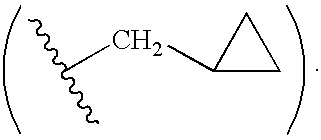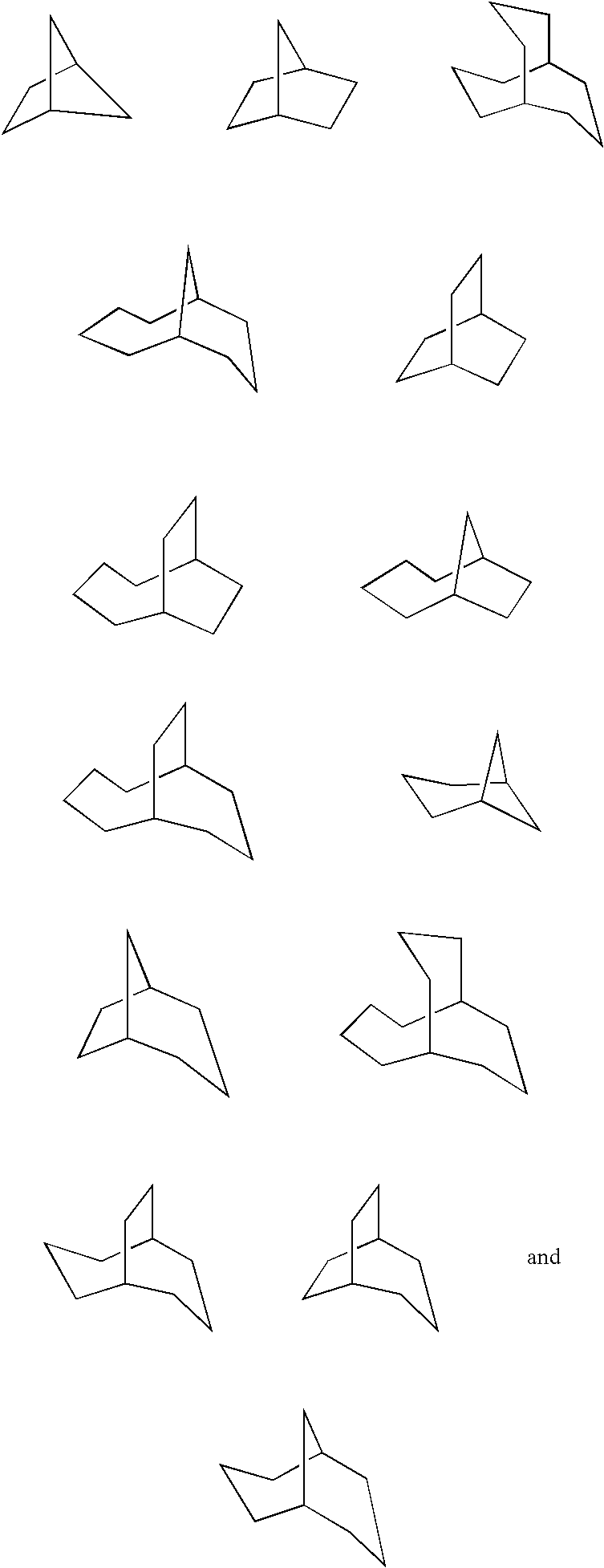Antiviral compounds
a technology of antiviral compounds and compounds, which is applied in the direction of peptides, drug compositions, peptides/protein ingredients, etc., can solve the problems of limited usefulness of effects, and achieve the effects of improving oral bioavailability, enhancing activity against development, and improving inhibitory or pharmacokinetic properties
- Summary
- Abstract
- Description
- Claims
- Application Information
AI Technical Summary
Benefits of technology
Problems solved by technology
Method used
Image
Examples
example 1
[0764]
[0765]A three necked round bottom equipped with a reflux condensor was charged with chlorosulfonyl isocyanate (5.25 ml, 0.06 mol) and cooled to 0° C. Formic acid (2.25 mL, 0.06 mol) was added dropwise with rapid stirring with rapid gas evolution observed. Upon complete addition of formic acid, the reaction was let warm to room temperature. After 2 h, the resultant reaction vessel containing the solid sulfamoyl chloride was cooled to 0° C. and phenol (1.88 g, 0.02 mol) dissolved in NMP (25 mL) was added dropwise via an addition funnel. The reaction was let warm to room temperature. After 3 h stirring, the reaction mixture was poured into cold saturated aqueous NaCl (120 mL) and extracted with EtOAc. After removal of the separated organic solvent, the crude product was purified by column chromatography on silica (35% EtOAc / hexane) to provide sulfamic acid phenyl ester (2.8 g, 81%): LCMS found 173.9 [M+H]+.
[0766]
[0767]N-t-Boc-cis-4-hydroxy-L-proline methyl ester (100.0 g, 407.7 m...
example 2
[0775]
[0776]1-({1-(2-tert-Butoxycarbonylamino-3,3-dimethyl-butyryl)-4-[2-(2-isopropylamino-thiazol-4-yl)-7-methoxy-quinolin-4-yloxy]-pyrrolidine-2-carbonyl}-amino)-2-vinyl-cyclopropanecarboxylic acid methyl ester (1.09 g, 1.40 mmol) was treated with 4N HCl in dioxanes (11 mL) and reacted at room temperature for 1 h. Solvents were removed and the crude residue dried. To the resultant solid was added succinimidyl-cyclopentylcarbonate (340 mg, 1.50 mmol), THF / H2O (6:1, 5.7 mL), and triethylamine (0.2 mL, 1.50 mmol). After stirring for 6 h at room temperature, the reaction was quenched with 0.5N aqueous HCl. The solution was extracted with EtOAc, washed with saturated aqueous NaCl, and dried over sodium sulfate. After removal of solvent, the crude product was purified by column chromatography on silica (5-10% MeOH / CH2Cl2) to provide the cyclopentylcarbamate (0.705 g, 64%).
[0777]The methyl ester (300 mg, 0.39 mmol) was dissolved in THF / MeOH (3:1, 3.2 mL) and treated with LiOH dissolved i...
example 3
[0779]
[0780]A round bottom flask was charged with Compound 1 (20 mg, 0.022 mmol) from Example 1 and dissolved in DME (1 mL) and water (1 mL). To the stirring mixture tosyl hydrazide (30.8 mg, 0.17 mmol) and sodium acetate (27.1 mg, 0.33 mmol) were added and the reaction was heated to 95° C. for 1 hour. The reaction mixture was diluted with water and extracted with dichloromethane. The organic layer was dried over sodium sulfate, filtered, and concentrated. The crude mixture was purified by reverse phase HPLC to provide Compound 3 (3.7 mg, 19%): 1H NMR (CDCl3, 300 MHz) δ 11.46 (bs, 1H), 8.77 (s, 1H), 8.13 (d, 1H), 7.85 (s, 1H), 7.75 (s, 1H), 7.21-7.38 (m, 6H), 5.75 (s, 2H), 5.18 (m, 1H), 4.58 (m, 2H), 4.06 (m, 7H), 3.59 (m, 1H), 2.50-2.71 (m, 2H), 2.01 (m, 1H), 1.47 (d, 3H), 1.25-1.48 (m, 10H), 1.24 (d, 6H), 0.95 (s, 9H), 0.90 (s, 2H); LCMS found 908.10 [M+H]+.
PUM
 Login to View More
Login to View More Abstract
Description
Claims
Application Information
 Login to View More
Login to View More - R&D
- Intellectual Property
- Life Sciences
- Materials
- Tech Scout
- Unparalleled Data Quality
- Higher Quality Content
- 60% Fewer Hallucinations
Browse by: Latest US Patents, China's latest patents, Technical Efficacy Thesaurus, Application Domain, Technology Topic, Popular Technical Reports.
© 2025 PatSnap. All rights reserved.Legal|Privacy policy|Modern Slavery Act Transparency Statement|Sitemap|About US| Contact US: help@patsnap.com



